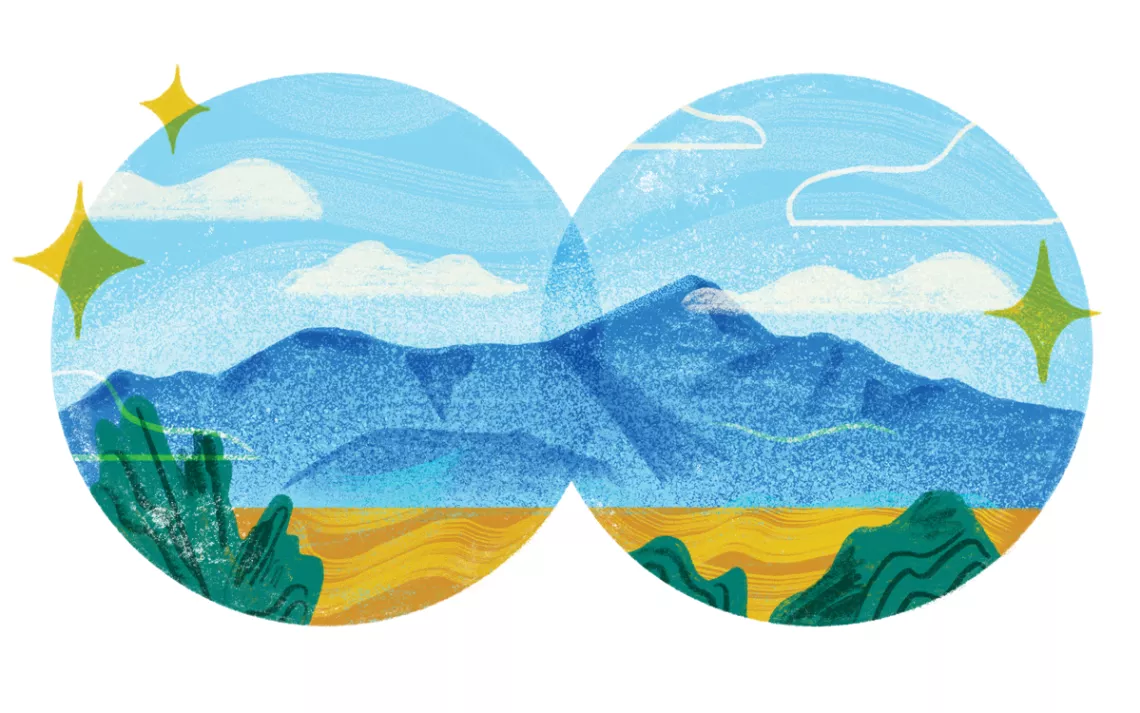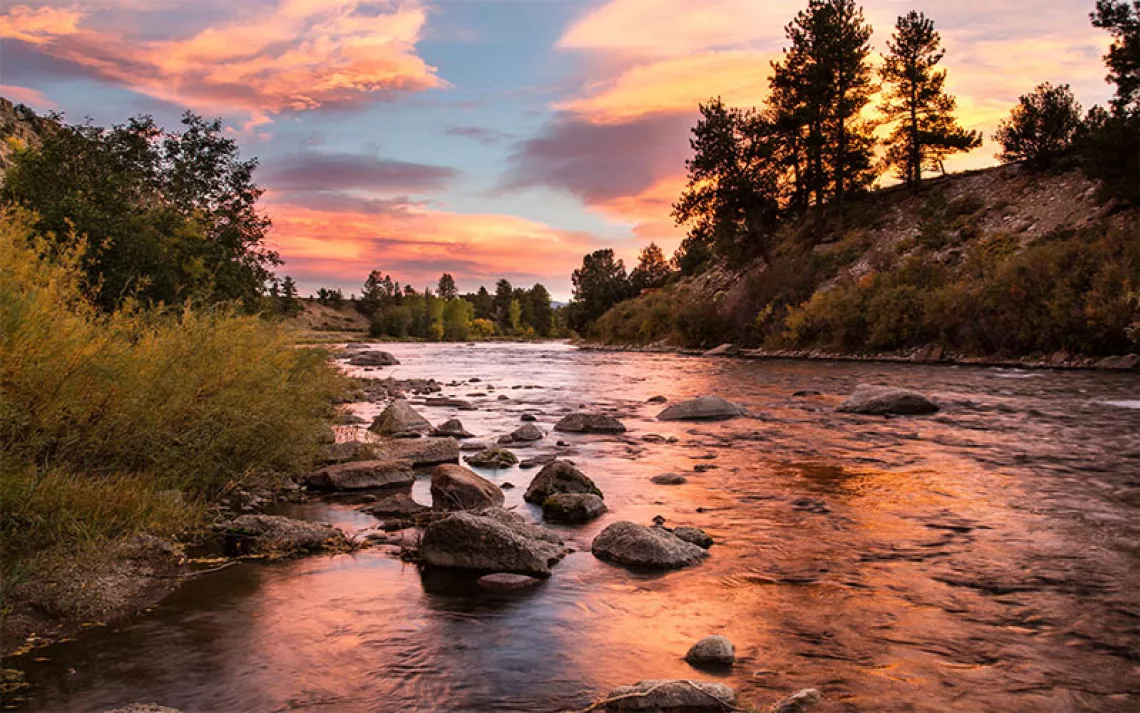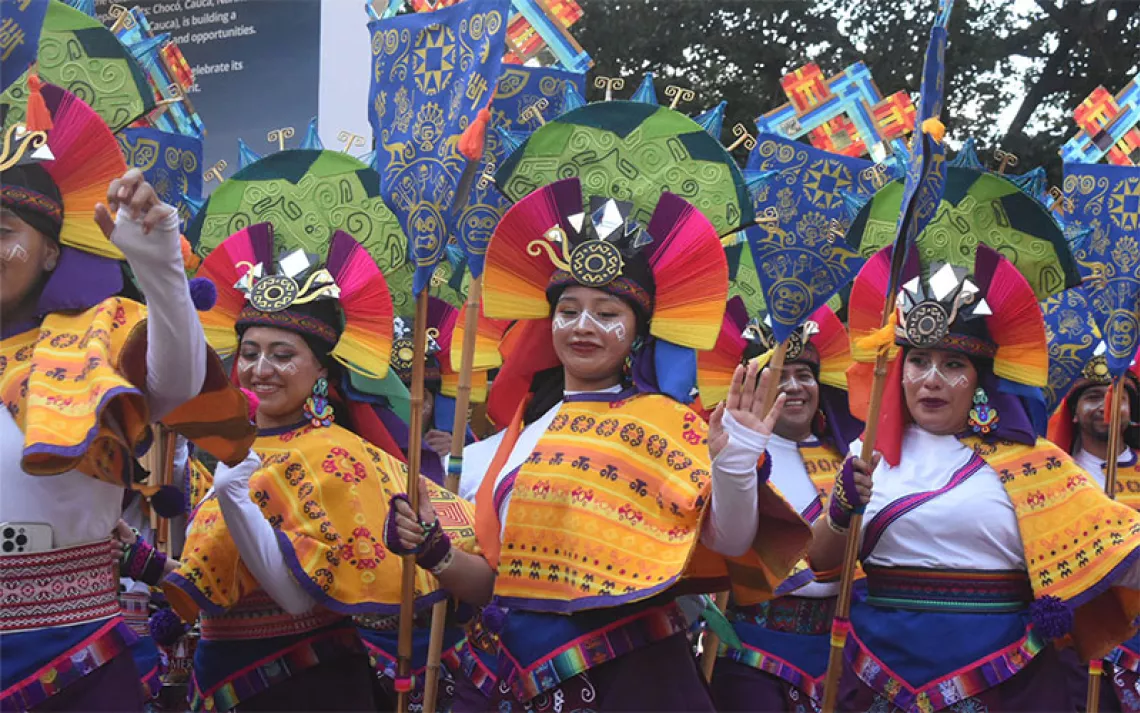Forever in the Distance
Some places are better left to the imagination

From my perch in the piñon-juniper woodland outside Cortez, Colorado, Sleeping Ute Mountain appears to be two mountains, or perhaps a small procession of them. People say it looks like a chief, its topography resembling the profile of a man lying on his back: The highest summit is his head, jutting toward the sky, the lower peaks his arms crossed over his chest. His body is cradled by hills and ridges and gullies. I sit on a sandstone cliff and watch a passing spring rainstorm briefly cast a veil over his face.
The mountain is so close, I can see which contours my feet would trace were I to stand up, stride across the sagebrush, and climb into his foothills. I know exactly which ridge I would climb to summit the crown of his head. And yet it's a walk I will never take, a view I'll never take in. Sleeping Ute Mountain is sacred to, and managed by, the Ute Mountain Ute Tribe. The tribe limits recreation and largely prohibits nontribal members from accessing its slopes.
We who live in the American West are taught that the copious public lands here belong to us all, and that our access to them is a right we've inherited through the foresight of environmentally minded forebears who created national parks and forests instead of chopping the land into private homes and cities. It's rare to be told that something is off-limits. We bristle at No Trespassing signs and tracts of private property that prevent us from reaching the public lands where we bike and hike and camp. We conquer mountains in such great numbers that public officials are forced to implement permit systems to keep us from trampling fragile alpine ecosystems.
While it's clear how a mountain might benefit from being kept largely off-limits, it's less clear what a person gains from being kept away from a place. Although we often need to touch and smell and experience places in order to love and protect them, those we can't reach end up growing most powerful in our imagination. As disconnected as many of us are from the world of myths that once overlaid the physical world we inhabit, we need to be reminded that there are things we cannot see or touch but which nonetheless shape our lives. It's good to stretch our imagination, to practice humility, to sit at the base of a mountain we'll never climb.
Like all white settlers on Ute lands, I moved here from somewhere else. I've moved frequently in adulthood, searching for something I can't quite name. My ancestors did much the same. Now, watching clouds and light paint the face of Sleeping Ute Mountain, I'm reminded of author Rebecca Solnit's description of the particular shade of blue that occupies distant horizons. She calls it the color of desire. When we see a far-off range of peaks, many of us long to be on them, to be among that alluring shade. But when we finally reach them—feet blistered, muscles sore—we find they're more or less the same color as the place we've just been. What if, Solnit asks, we didn't see desire as something to be satiated but understood it as a feeling in itself, an itch that doesn't have to be scratched?
Climbing Sleeping Ute won't bring me any closer to the perfect hue I seek. Doing so would only turn the mountain into any one of dozens I've stood atop. But as a mountain I will forever look at and never touch, it becomes something else entirely: a physical reminder of all I can never understand or conquer, and all I can learn by sitting still. The fact that it's out of reach only makes it shine more brightly. We don't have to send rockets to each star in the night sky to know that the stars make the world more beautiful, more holy, more whole.
 The Magazine of The Sierra Club
The Magazine of The Sierra Club



